If all goes to plan, at 12.20pm UK time on 22 December, Nasa’s James Webb Space Telescope (JWST) will lift off from a spaceport in French Guiana aboard a European rocket. It will then undertake a 30-day, 1.5 million km voyage through space to a Lagrange point – where the combined gravitational fields of the Earth and sun are at equilibrium. From this vantage point, the telescope will orbit the sun in lockstep with the Earth for five to 10 years, conducting the most detailed near- and mid-infrared observations of the universe to date. This should provide a new window into nucleosynthesis in primordial galaxies, and allow intricate study of the chemical composition of outer space.
Since its launch in 1990, the Hubble Space Telescope has captured the most detailed images of space ever recorded in the visible and ultraviolet regions of the electromagnetic spectrum. Among its most significant breakthroughs have been insights into the evolution of galaxies as they matured from dim, irregular-shaped objects when the universe was just 800 million years old to the brighter, more regular spiral- and disc-shaped galaxies seen as the universe approaches its present age of 13.8 billion years (an age Hubble’s data helped to determine). The light from even older galaxies, however, is invisible to Hubble, as the expansion of the universe has redshifted it into the infrared.
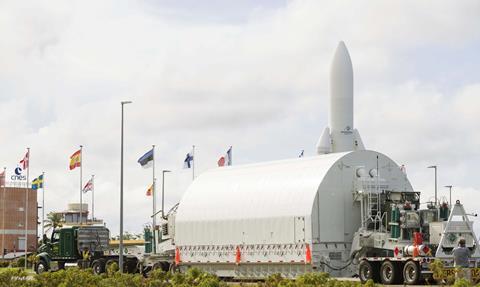
Enter the JWST. First conceived in 1996, its primary mission is to study the formation and evolution of the first galaxies by capturing infrared radiation. ‘You don’t have galaxies at the time of the cosmic microwave background,’ explains Klaus Pontoppidan, the project scientist for JWST at the Space Telescope Science Institute in Maryland. ‘It takes about 200 million years – we think – before the first stars and galaxies form, and for that you need the near- to mid- infrared. It’s that early formation that Webb is built to see – we want to detect the first [galaxy formation] because we don’t actually know when that happened.’
Theoretical models predict these early galaxies to have had a very high star formation rate and to have contained extremely massive stars that collapsed in spectacular, exotic supernovae. The ultraviolet and visible emission from these galaxies – received as infrared – could complement gravitational wave data to determine whether such supernovae provide a viable source for the universe’s heavy elements.
Chemical evolution
Closer to home, the telescope should allow more traditional infrared spectroscopy. ‘I think the Webb telescope is going to be an extraordinary discovery machine for many aspects of astrophysics, including astrochemistry, and it’s a privilege to be part of this experiment that the human race is doing,’ says astronomer Rens Waters of Radboud University in the Netherlands, part of the science team for the telescope’s mid-infrared spectrometer. ‘The telescope is so sensitive that it will be able to look at galaxies far away and study their molecular contents, so we will be able to look at, for example, carbon molecules at very high redshift and work towards tracing the whole chemical evolution of the universe.’
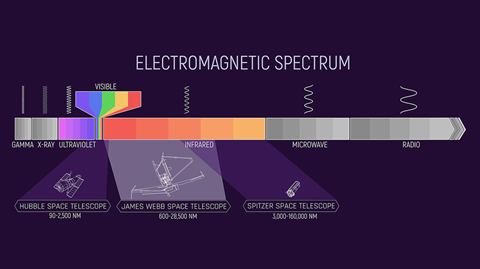
Waters’ own work focuses on exoplanets and planet-forming discs, and he says that ‘we’re getting closer and closer to understanding where the Earth and the solar system come from. James Webb will certainly contribute to that understanding by looking into the atmospheres of planets that orbit other stars, trying to figure out how much of every molecule there is, and what kind of clouds there are, for instance.’
The JWST will pay particular attention to Earth-like planets on very tight orbits around much smaller, dimmer stars than our own sun. The planet would cast a larger shadow on the star, making it easier to detect, and the ‘habitable zone’ (the region in which water can be liquid) of these dimmer stars would be much closer to the star. These planets could, therefore, provide insights into the origin of conditions suitable for life on Earth and the potential for extra-terrestrial life. ‘To scale this up to detect, say, a sun-like star and an Earth-like planet is beyond the capabilities of James Webb and so we think that a next generation telescope will be necessary,’ says Waters.
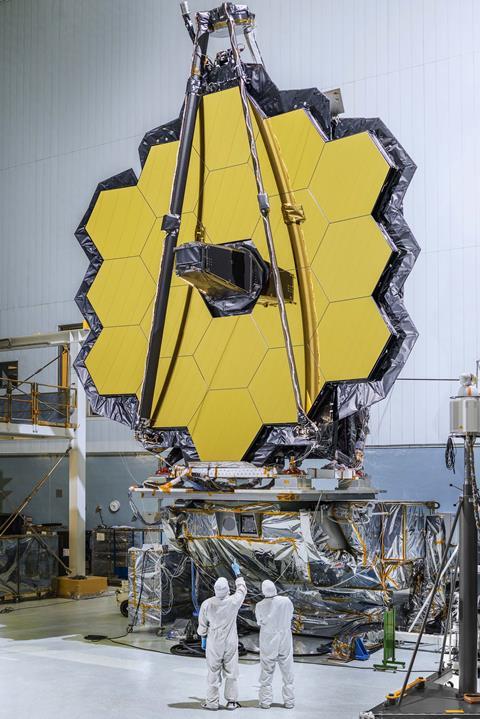
Els Peeters of the University of Western Ontario in Canada, meanwhile, plans to study large organic molecules such as polycyclic aromatic hydrocarbons and fullerenes in interstellar dust clouds. ‘These molecules are present in a large fraction of our universe,’ she says. ‘We think in regions where they are present they dominate the heating of the gas through the photoelectric effect. They can also change the charge balance for the equilibrium in chemical reactions, so just their presence determines what other processes can and cannot happen. What we detect from these molecules is mostly vibrational emission, and the region covered by JWST is exactly where we see the emission of all these species.’
Pontoppidan says that predicting where the most significant impacts of JWST will be felt is impossible. ‘Whatever prediction I make now I will surely be wrong,’ he says. ‘When you put an observatory in orbit that is orders of magnitude better than what we’ve had before it’s a fool’s errand to predict what fields it will really push in the end – we learned that with Hubble.’ He hopes a future space telescope will contain a dedicated molecular spectrometer so that researchers can ‘not just separate individual spectral lines but also measure their kinematics – that greatly helps you model the temperatures and how many molecules are present. But Webb can go a long way on that and do a lot better than has been done before.’





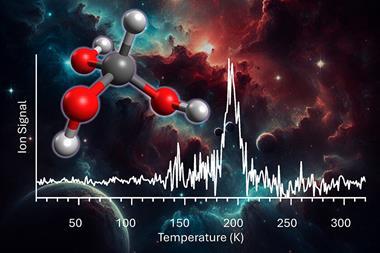
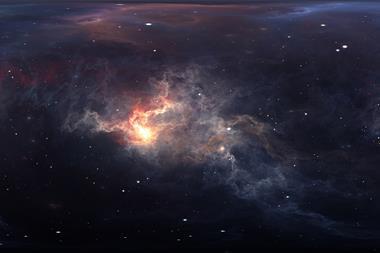
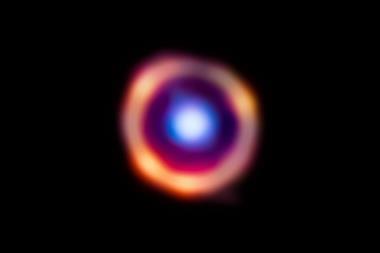
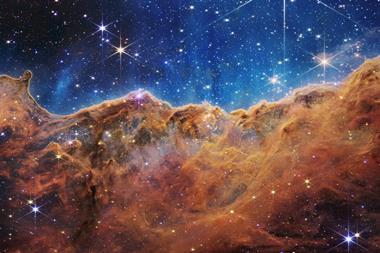
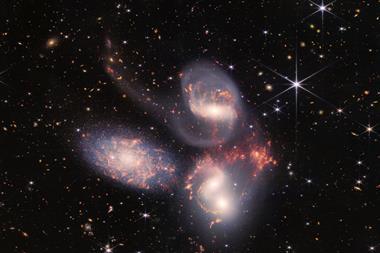
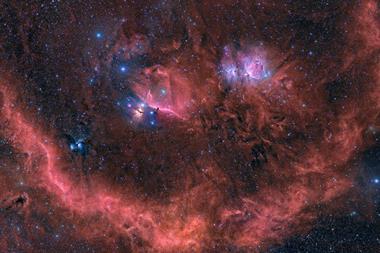






No comments yet